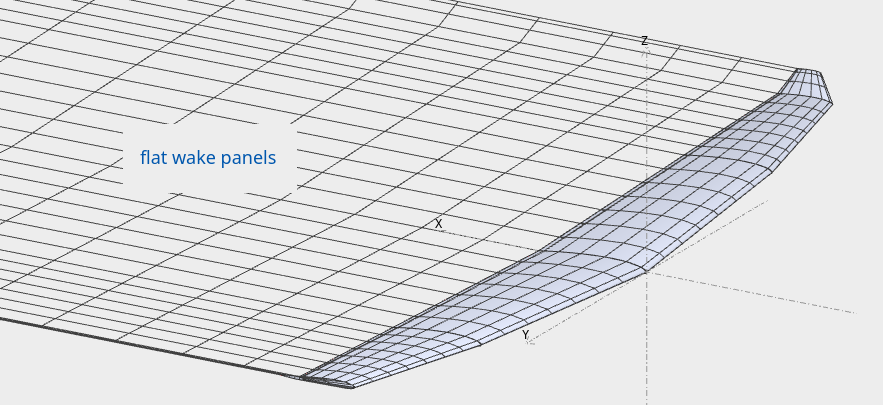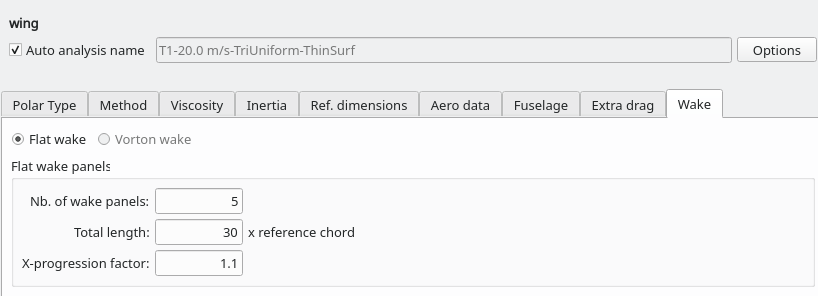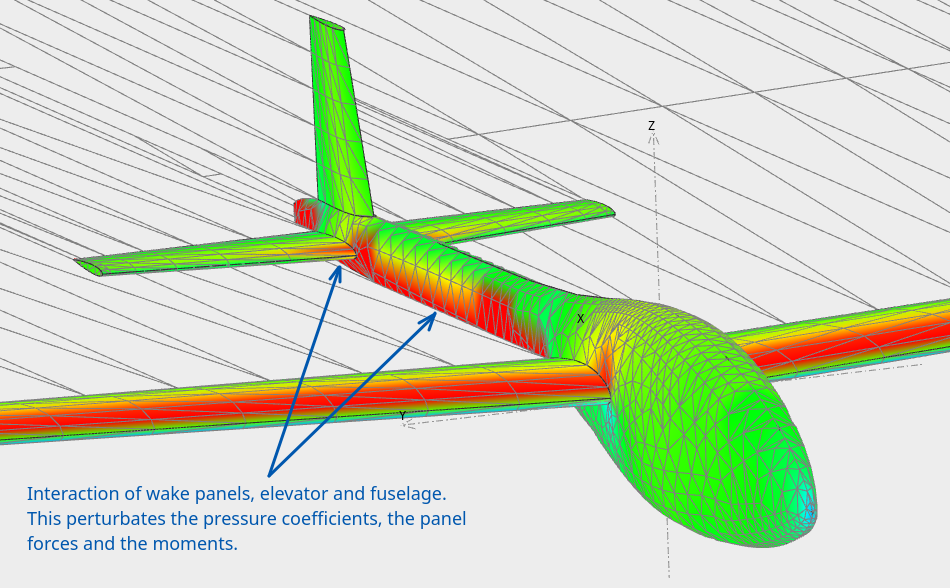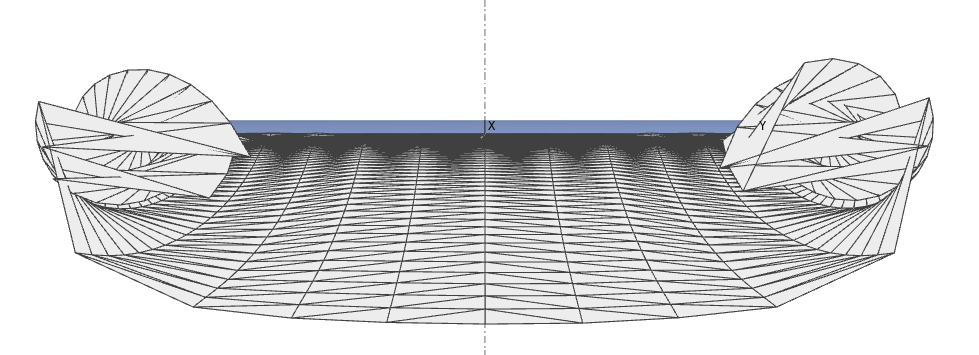
Wake representation
Updated July 15th, 2020
Wake representation
To apply the Kutta condition in the analyses, a representation of the wake needs to be included in the model.

This approach is the one used in AVL, xflr5 and flow5. It has the advantage of leading to a linear problem which does not require any iteration, and which can be solved quickly for quick estimations of the main aerodynamic quantities of interest.
As numerical experiments have shown, the only important thing is that the wake should extend downstream to a point where the influence of the airplane's mesh elements is no longer felt. This typically occurs at distances greater than 30 MAC.
The number of wake panels in each wake column and the geometric progression factor from one panel's streamwise length to the next have been made parameterizable for testing purposes, but have only negligible influence. The only consideration worth mentioning is to avoid excessively stretched panels since this can lead to numerical issues in rare cases.
The recommendation is to leave the default settings unchanged, i.e. 30 MAC, 5 wake panels, with a progression factor equal to 1 or 1.1.

Back to top
Issues with the flat wake model
A drawback of the flat wake model is the potential numerical interaction of the wake panels with the body panels. This occurs for instance in the cases where the wake panel extending from the main wing's trailing edge come close to the tail's surface panels. This is the reason why it is strongly recommended to avoid having the elevator and main wing with close z-positions. In such a case, it is preferable to "cheat" a little with the geometry and offset the elevator out of the vertical position of the main wing.
Another drawback has become apparent with the inclusion of the fuselage in the analysis in flow5: the wake panels also interact strongly with the fuselage mesh elements, which leads to local numerical issues, high doublet densities and high pressure forces.

From the physical point of view, in the case of a positive angle of attack, the flow will be directed downwards and avoid to a large extent the encounter with the fuselage and the elevator. These effects are also damped by viscosity, which is not accounted for in the panel method.
Back to topWake relaxation
To improve the situation, a more accurate model for the wake is required.
Unfortunately the shape of the wake is itself a result of the analysis and cannot be determined at the ouset: typically, the wake takes the shape of the streamlines, which can only be calculated from the source and doublet distributions resulting from the analysis.
The update of the wake shape from the inviscid results is called the wake relaxation process, or the wake roll-up because the wake takes the shape of the tip vortices.

The implementation of a wake relaxation process in the analysis makes the problem non-linear, meaning that it needs to be solved using an iteration loop.
This adds a significant layer of complexity, increases the duration of the analysis, and raises questions of convergence criteria and of non convergences.
Another difficulty is the potential intersection of the wake panels shedded by the main wing with the fuselage and the tail, as well as the self intersection of the wake panels as illustrated in the image above. These complications would need to be adressed, and it is not obvious how to do this in an automatic and robust way.
All in all, it seems that running successfully an analysis with wake roll-up of flat panels would require significant user know-how, as well as a trial and error process to obtain a reasonable wake shape. Results would likely be very dependent on analysis settings, wake settings and user input. At best it is expected to work reliably for standalone wings only.
For these reasons, the wake relaxation process has never been activated in either xflr5, since the intent of this application is the ease of use and the robustness of the analyses.
Instead, an interesting and powerful alternative is the Vortex Particle Wake, which has now been activated in flow5 v7.01 beta 12.
Back to top